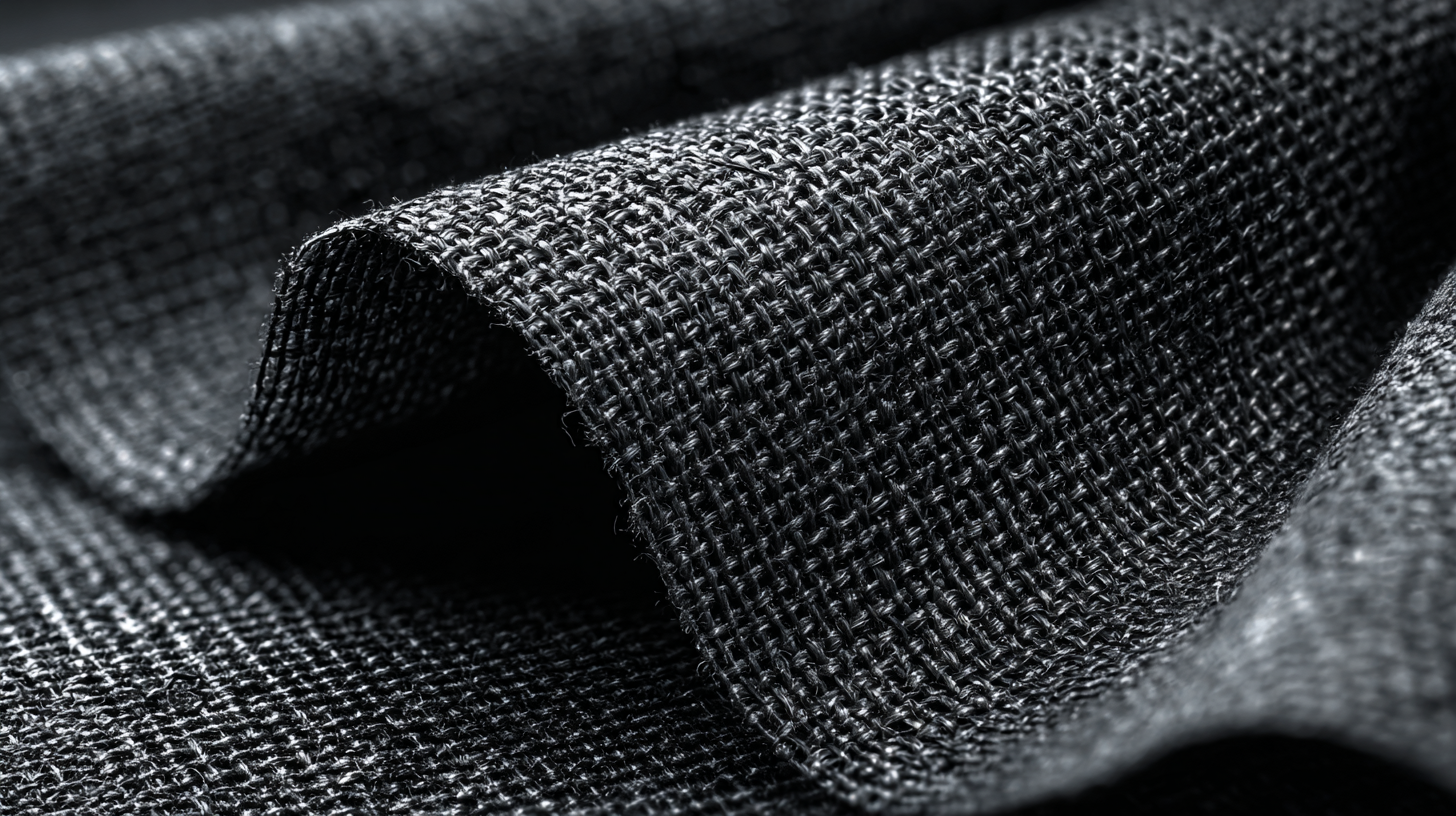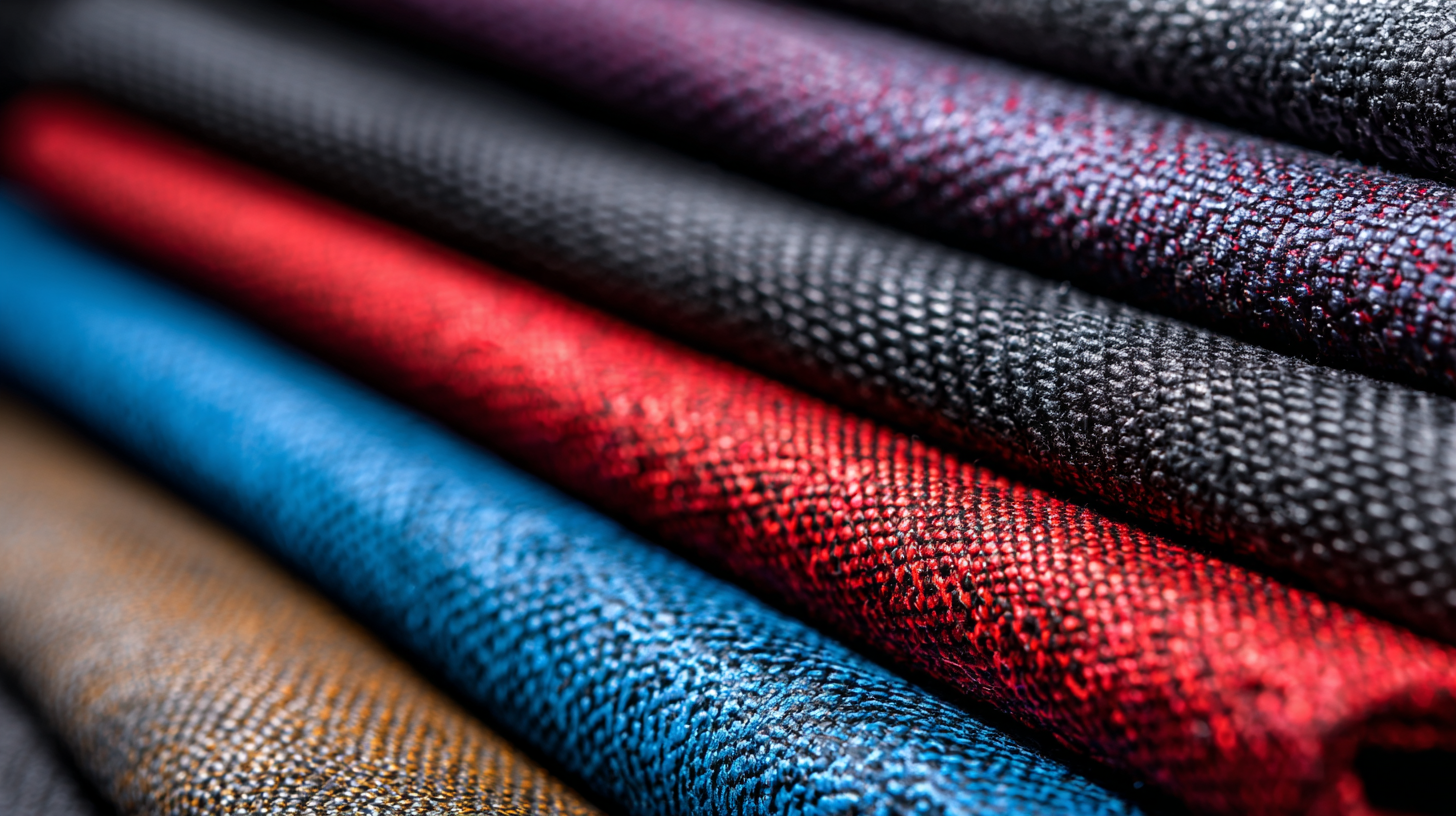10 Industry Standards for Best Fire Resistant Fabric and 7 Reasons to Choose Them
Table of Contents
- Understanding Fire Resistant Fabrics: Key Characteristics and Benefits
- Exploring the 10 Industry Standards for Fire Resistant Fabrics
- Innovative Technologies Shaping the Future of Fire Resistant Materials
- Comparing Fire Resistant Fabrics: Which Standards Matter Most?
- 7 Compelling Reasons to Choose Fire Resistant Fabrics for Your Projects
- Future Trends in Fire Resistant Fabric Development and Applications
- FAQS
- Related Posts
In today's rapidly evolving industries, the demand for Fire Resistant Fabric has surged due to its critical role in ensuring safety and compliance with stringent regulations. According to a recent report by Research and Markets, the global fire-resistant fabric market is projected to reach USD 5.6 billion by 2026, driven by stringent workplace safety regulations and increased demand from various sectors, including construction, military, and aviation.
 Shijiazhuang Shielday Technology Co., Ltd. stands at the forefront of this important market as an advanced manufacturer of high-performance EMI shielding textiles and conductive wires. By specializing in innovative fire-resistant solutions, Shielday Technology not only offers a comprehensive range of products but also provides tailored development services to meet the specific needs of its clients. As industries continue to prioritize fire safety, understanding the 10 industry standards for the best fire-resistant fabrics and the 7 compelling reasons to choose them becomes essential for manufacturers and consumers alike.
Shijiazhuang Shielday Technology Co., Ltd. stands at the forefront of this important market as an advanced manufacturer of high-performance EMI shielding textiles and conductive wires. By specializing in innovative fire-resistant solutions, Shielday Technology not only offers a comprehensive range of products but also provides tailored development services to meet the specific needs of its clients. As industries continue to prioritize fire safety, understanding the 10 industry standards for the best fire-resistant fabrics and the 7 compelling reasons to choose them becomes essential for manufacturers and consumers alike.
Understanding Fire Resistant Fabrics: Key Characteristics and Benefits
Fire-resistant fabrics are essential in various industries, particularly in sectors like construction, healthcare, and manufacturing, where exposure to flames and heat is a critical concern. These fabrics possess unique characteristics that set them apart from regular textiles. One significant characteristic is their inherent flame resistance, which is typically achieved through specific treatments or by using materials like aramid and modacrylic fibers. According to the National Fire Protection Association (NFPA), approximately 23% of all workplace injuries stem from fire-related incidents, emphasizing the importance of using fire-resistant materials in environments prone to such hazards.
In addition to their protective qualities, fire-resistant fabrics offer several benefits. For instance, they often provide enhanced durability and longevity, making them a cost-effective choice in the long run. A report from the American Society for Testing and Materials (ASTM) indicates that fabrics treated with fire-resistant finishes can maintain their protective qualities after multiple washes, allowing for extended use. Furthermore, these fabrics are often designed with comfort in mind, ensuring that individuals wearing fire-resistant clothing do not compromise on mobility or ease of movement. This combination of safety, durability, and comfort is why industries are increasingly turning to high-quality fire-resistant fabrics as a standard in their safety protocols.
Exploring the 10 Industry Standards for Fire Resistant Fabrics
When it comes to selecting fire-resistant fabrics, understanding the industry standards is crucial for ensuring safety and performance. The realm of fire-resistant textiles is governed by various guidelines that dictate how materials should behave under extreme conditions. These standards not only assess the flame-retardant properties of fabrics but also their durability and comfort. For instance, the National Fire Protection Association (NFPA) sets guidelines that many industries follow to guarantee that their protective clothing meets stringent safety requirements. Other standards, such as those provided by ASTM International and ISO, focus on specific tests to measure ignition resistance, char length, and after-flame duration, ensuring the fabric's reliability in hazardous environments.
In addition to safety, the choice of fire-resistant fabrics can significantly impact the overall performance of occupational clothing. Fabrics that adhere to these standards often incorporate advanced technologies and treatments, enhancing protection against heat and flames while promoting breathability and moisture management. This not only improves comfort for the wearer but also extends the lifespan of the garments. Industries such as firefighting, manufacturing, and energy production particularly benefit from materials that align with these critical standards, ensuring that professionals are adequately protected from potential fire hazards while maintaining functionality in their demanding work environments.
Innovative Technologies Shaping the Future of Fire Resistant Materials
The future of fire resistant materials is being significantly shaped by innovative technologies that prioritize safety without compromising comfort and functionality. Recent studies, such as the Global Market Insights report, indicate that the fire-resistant textile market is expected to reach over $7 billion by 2027, driven by advancements in fiber technology and smart materials. These innovations include the development of inherently flame-resistant fibers and flame-retardant treatments that enhance the durability and effectiveness of fabrics.
Tip: When selecting fire resistant fabrics, consider those made with advanced synthetic fibers, which offer superior protection while being lightweight and versatile for various applications, from industrial protective wear to home furnishings.
Moreover, as manufacturers adopt new technologies like nanotechnology and thermal barrier coatings, the properties of fire-resistant materials continue to evolve. For instance, the integration of breathable membranes allows for enhanced comfort in high-temperature environments, making safety gear more user-friendly. These advancements are crucial not only for compliance with safety regulations but also for improving worker well-being in high-risk industries.
Tip: Always check for certifications such as NFPA or ASTM to ensure the fire resistant fabric meets the required safety standards, ensuring optimum protection in hazardous conditions.
10 Industry Standards for Best Fire Resistant Fabric and 7 Reasons to Choose Them
| Standard | Description | Application | Material Type | Benefits |
|---|---|---|---|---|
| NFPA 701 | Standard Methods of Fire Tests for Flame Propagation of Textiles | Commercial Drapery Textiles | Polyester, Cotton | High resistance to ignition |
| ASTM E84 | Standard Test Method for Surface Burning Characteristics of Building Materials | Wall and Ceiling finishes | Fiberglass, Mineral Wool | Low smoke and flame spread |
| ISO 11925-2 | Determination of Ignitability of Building Products | Construction materials | Polypropylene, Kevlar | Suitability for various climates |
| UL 94 | Standard for Safety of Flammability of Plastic Materials | Electronics and appliances | PVC, Polycarbonate | Prevention of ignition sources |
| EN 13501-1 | Fire classification of construction products and building elements | Building and construction | Mineral-based fabrics | Enhanced safety in building |
| BSS 7239 | Specification for Fire Resistant Fabric | Fireproof curtains and screens | Silicone treated fabrics | Durability and easy maintenance |
| DIN 4102 | Fire Behavior of Building Materials and Elements | Construction and interior materials | Aramid fibers, Nomex | Fire safety assurance |
| NFPA 2112 | Standard on Flame-Resistant Garments for Protection of Industrial Personnel | Industrial workwear | Cotton/Polyester blends | Comfort and protection |
| ASTM D6413 | Standard Test Method for Flame Resistance of Textiles | Textile products | Wool, Flame-retardant treated fabrics | Versatile material choices |
| GB 8624 | Classification for Fire Performance of Building Materials | Composites and coatings | Polyester, Glassfiber | Regulatory compliance |
Comparing Fire Resistant Fabrics: Which Standards Matter Most?
When evaluating fire resistant fabrics, understanding the standards that govern their efficacy is crucial for safety and compliance. The primary standards include ASTM E84, which evaluates surface burn characteristics, and NFPA 701, focusing on flame propagation. According to a 2021 report by the National Fire Protection Association (NFPA), adherence to these standards significantly reduces fire-related injuries in industrial settings, reaffirming their importance in the decision-making process. Fabrics that meet these standards are not only compliant but also provide a reliable measure of protection against unexpected fire hazards.

Additionally, the International Fire Safety Standard (IFSS) outlines performance criteria specifically tailored for textiles used in high-risk environments. Research indicates that fabrics which pass these rigorous tests can decrease the likelihood of igniting by up to 80%. A comprehensive study published in the Journal of Fire Sciences emphasized that the choice of fire resistant fabric, when properly validated against these standards, can greatly impact the safety culture of an organization. This makes the evaluation of fire resistant fabrics not merely a compliance issue, but a fundamental element of workplace safety strategy.
7 Compelling Reasons to Choose Fire Resistant Fabrics for Your Projects
In today’s fast-paced industrial landscape, the selection of materials for projects often hinges on safety and performance. Fire resistant fabrics have emerged as an essential choice, particularly in sectors where fire hazards are prevalent. These fabrics not only endure extreme temperatures but also provide critical protection against flames, making them paramount for industries such as construction, aerospace, and automotive. By incorporating fire resistant fabrics, manufacturers can ensure compliance with safety regulations, mitigating risks while enhancing the overall durability of their products.
At Shijiazhuang Shielday Technology Co., Ltd., we specialize in high-performance textiles, including fire resistant options that meet stringent industry standards. Our innovative approaches to manufacturing emi shielding textiles and conductive wires allow us to offer versatile solutions tailored to your project needs. Choosing fire resistant fabrics from our comprehensive portfolio not only promotes safety but also guarantees reliability and performance. With our commitment to custom product development services, we empower clients to harness the full potential of fire resistant materials, ensuring that every project is both safe and successful.
Future Trends in Fire Resistant Fabric Development and Applications
As the demand for fire-resistant fabrics evolves, future trends in their development and applications are expected to reflect advancements in both technology and regulatory standards. According to a recent report by the Textile Institute, the global market for fire-resistant fabrics is projected to reach $5.45 billion by 2028, growing at a CAGR of 7.8%. This growth is driven by increasing safety regulations across various industries, including construction, transportation, and protective clothing.

One notable trend is the integration of nanotechnology in fire-resistant fabrics, enhancing their thermal protection and durability. A study by the American Society for Testing and Materials (ASTM) highlighted that fabrics treated with nanostructured coatings exhibit a significantly higher resistance to heat and flame, offering superior protection for industrial workers. Additionally, companies are exploring sustainable materials, aligning with environmental goals while ensuring safety. Biodegradable fire-resistant fabrics are becoming increasingly viable, reducing the environmental impact without compromising performance. As innovation continues, the fire-resistant fabric industry is poised to meet the dual challenges of safety and sustainability, shaping the future of protective apparel and gear.
FAQS
: Fire-resistant fabrics are materials designed to resist ignition and minimize flames in hazardous environments. Industry standards are crucial as they ensure that these fabrics meet safety requirements for protection and performance.
The National Fire Protection Association (NFPA), ASTM International, and ISO are key organizations that establish guidelines for assessing the flame-retardant properties and durability of fire-resistant fabrics.
Fire-resistant fabrics often incorporate advanced technologies that promote breathability and moisture management, improving comfort for the wearer in demanding work environments.
Innovations in fiber technology and smart materials, such as inherently flame-resistant fibers and thermal barrier coatings, are significantly improving the durability and effectiveness of fire-resistant fabrics.
Industries should choose fire-resistant fabrics to comply with safety regulations, protect against flames, and enhance the overall durability of their products, particularly in sectors like construction, aerospace, and automotive.
Always check for certifications such as those from NFPA or ASTM to ensure the fire-resistant fabric meets the required safety standards for optimum protection in hazardous conditions.
Industries such as firefighting, manufacturing, energy production, construction, aerospace, and automotive particularly benefit from fire-resistant fabrics due to their role in protecting professionals from fire hazards.
Technology plays a significant role by leading to the development of advanced materials and treatments, like nanotechnology and breathable membranes, enhancing both safety and comfort in high-temperature environments.
Related Posts
-

2025 Industry Trends in Firefighting Apparel: How to Choose the Best FR Clothing for Safety
-

How to Navigate Import and Export Certifications for Best Conductive Tape
-

Exceptional Tinned Tinsel Wire Manufacturing in China for Global Buyers
-

Unmatched Manufacturing Excellence: Discover the Best High Temp Resistant Sleeves from China's Leading Factory

